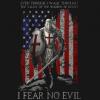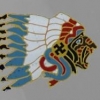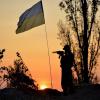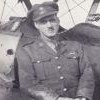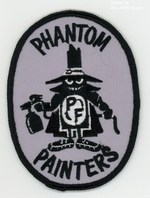Leaderboard
Popular Content
Showing most liked content on 12/02/2021 in Posts
-
5 pointsIf you note carefully, the following values are different in those two data inis: CLmax=0.29084 AlphaStall=17.50 AlphaMax=18.73 AlphaDepart=22.23 StallMoment=-0.002 StallDrag=0.0227 Easiest way to create a more spin-prone FM is to lower those alpha stall/max/depart values. Of further significance is to pop in a stalldrag value (Capun's data ini has one, the other data ini doesn't). Another interesting bit of info.: those stallmoment values of negative 0.002 are close to no stallmoment value at all - slightly nose-down, mushy stalls when a negative no. is placed there - a nastier, nose-up stall if a positive value is there instead. We have some nicely spin-prone aircraft in FE2 courtesy of toggling and tweaking of the entries listed above. General suggestions: default TW stallmoment value (in FE2) = -0.02 (mushy, nose down stall) never exceed value for harsh, nose-up stalls (have tested this, AI do not like when it goes above this number) = 0.02 recommended values for mushy, nose-down stalls = -0.005 to -0.015 recommended values for harsher, nose-up stalls (such as for WW1 aircraft, also "Widow Makers" (F-104s) and other jet-age pocket rockets) = 0.005 to 0.015 values closer to zero are of course gentler in either range of numbers (positive, nose-up, or negative, nose-down) For more spin-prone wings, check alphastall/max/depart values, also CLmax values, for tip/middle/root sections of wings (also doesn't hurt to check such values for the left/right stab entries too). To induce very spin-prone aircraft, avoid alpha-related values higher than about 13.00 or 14.00. For example: AlphaStall=11.00 AlphaMax=13.00 AlphaDepart=13.50 One more (obscure) tip: the "Chord" values that are included in some data inis, per wing tip/middle/root sections, while not central to spin characteristics, may be manipulated somewhat for a slightly different FM feel. Chord values are in meters, by the way. I see that the chord value used in those entries you've quoted in this thread is "1.11." If you want a narrower chord and more spin-related oddities, pull that value down to about 0.95 or so. Changes in chord of about +/- 0.2 (20 cm added or removed) do impact (in subtle ways) how things like lift, drag, also stall behavior, work. Recommended however is to leave chord values alone if not comfortable tampering with them, and to manipulate alphastall/max/depart values instead, by values of about 2.00 - until you get desired and/or historical, textbook-recorded stall results. It's possible to get good/realistic FMs in the TW series but it takes time. Avoid tweaking "CLmax," by the way, unless comfortable with that - because it can improve wing lift too much, into unhistorical values/ranges - particularly for jet-age stuff. And yes, the AI will "honor" all data ini values implemented in said files - as far as I've been able to see in FE2, there will be no cheating by the AI (except maybe when landing but that's not a major concern). Cheers to all from your friendly neighborhood WW1 aircraft FM factory , Von S
-
4 pointsJust uploaded the M109A2 Gulf War model. more to come with more textures to cover the Vietnam war.
-
3 pointsView File Two M109A2 howitzer models Hello and thank you for downloading my work. https://gkabs.net What's included: Two M109A2 howitzer models one static All my files should include the Strike Fighters 2 Series game file (.LOD) and the texture required. (tested and work only for SF2) Installation: Copy files to their proper folder //Please change the XXX with the correct number from your //Soundlist: [SoundList] SoundFileXXX=155MM_M126 SoundFileXXX=TankEngine SoundFileXXX=GKTankTrack SoundFileXXX=50caliber [TankEngine] Priority=LOW 3DSound=TRUE DopplerEffect=TRUE Looped=TRUE NumBuffers=2 MaxDist=250.000000 MinDist=10.000000 InsideConeAngle=360 OutsideConeAngle=360 ConeOutsideVolume=100 [GKTankTrack] Priority=NORMAL 3DSound=TRUE DopplerEffect=FALSE Looped=TRUE NumBuffers=4 MaxDist=500.000000 MinDist=50.000000 InsideConeAngle=360 OutsideConeAngle=360 ConeOutsideVolume=100 [155MM_M126] Priority=NORMAL Looped=FALSE NumBuffers=2 3DSound=TRUE DopplerEffect=FALSE MaxDist=1500.000000 MinDist=400.000000 InsideConeAngle=360 OutsideConeAngle=360 ConeOutsideVolume=100 [50caliber] Priority=NORMAL Looped=TRUE NumBuffers=4 3DSound=TRUE DopplerEffect=FALSE MaxDist=1000.000000 MinDist=50.000000 InsideConeAngle=360 OutsideConeAngle=360 ConeOutsideVolume=100 If you need any further help please read the Knowledge Base at: https://combatace.com/forums/forum/268-thirdwire-strike-fighters-2-series-knowledge-base/ 1.0.0 LICENSE: You are allowed to use this model and everything included with it for personal non-profit use for Strike fighters 1 and 2. For use outside of this scope, you need to contact me for permission. gkabs@gkabs.net Credit goes to the following: Third Wire for making this outstanding game. compufat for helping me with the textures big thank you. Credit goes to https://www.textures.com as I use a lot of their photos to create the skins. Google for some photos and information. And finally not to forget the wonderful site of https://combatace.com and all the nice members and their dedicated support for this game. Software used: 3d Max 2009 UVLayout v2 Pro Substance Painter Adobe Photoshop If you need any assistance please contact me at gkabs@gkabs.net Site gkabs.net gulfknights.net Submitter GKABS Submitted 12/02/2021 Category Ground Object Mods
-
3 pointsTK wanted the SF series to be "light", i.e. fun to fly without horrible handling characteristics. So most stock FMs produce a simple stall that just "mushes" out in a stable way. Since the flight models don't have the elements that are required to accurately model departing controlled flight, asymmetrical data at high AoAs can be used to create a decent effect. The one aircraft TK didn't dumb down the handling characteristics and perhaps made it even harder than reality was the English Electric Lightning. But I complained about it: if a hard-wing F-4 isn't going to depart at high AoA like is should, why should the Lighting? While the Lightning remains one of the more difficult aircraft to fly, TK apparently agreed with my argument and dumbed down the difficulty a bit to be more in line with the other SF2 aircraft that should otherwise be very difficult to fly in some areas of the envelope: i.e. the F-100 and F-104 should be able to kill you instantly under certain conditions, instead they have very docile flight models compared to reality. When TK started "dumbing down" SF2 in later patches, I gave up trying to make SF2 more realistic. I fly DCS World for the flight models, SF2 for the amazing range of aircraft and historical environments available.
-
3 points
-
2 pointsHello everyone, If you have Combined Arms module, AND you are interrested in a Anti submarine Mission using S-3 Viking ; you might want to take a look at my mission here ; https://forums.eagle.ru/topic/288080-submarine-hunt-missionmini-game/ But to get that picture, you will have to find it and successfully attack it. Have a good one...
-
2 pointsonly if its the exact same plane if its been maintained, upgraded and is still useful in some role, why not keep using it? a B-52H is only about 50% the same aircraft that left the Boeing line in 1961.....
-
1 pointCome on, there is definitely cheating from the AI ! When you fly with afterburner on and the wingman follow with military power, when you cannot take-off because you're overloaded and the wingman has no problem, etc... With the debug screen the game engine changes the weight for AI to take-off (I read somewhere in the forum lol ) Maybe less in First Eagle, but definitely in Strike Fighter
-
1 pointIn the case of the B-52, you mentioned, a lot was wrong in the development pipeline. First it was intended to replace the B-52 by B-58 Hustler. A big fail. Then the B-70 Valkyrie, an even bigger fail. Then the B-1A which was a fail. Then the B-1B which was rather mediocre than good. Then the B-2 which is much to expensive to operate this bird in large numbers. So the B-52 is still operational, because there is no plane that fits better the needs of the USAF. Or as my old professor said: "It is not neccessary to have the high potentials, you must have the right potentials!"
-
1 pointMany thanks my friend ! Your beautiful and accurate ground object mods give a highly dimension with SF2 ! P.
-
1 pointYes you can partialy copy parts of ini from one aircraft to another from DATA to DATA files and it will change the flight model of AI. Try and watch what happens. Its interesting timespending by the way :)
-
1 pointyou know if you ever considered coming back, its been stable for over 8 years now
-
1 pointI only know two sims with really great helo flight models: DCS:World and Aerofly FS 2. Aerofly FS 2 has a lot of limitations compared to X-Plane and MSFS variants, but it is strong in VR with steady max FPS even with maxed out graphics settings and the helos it comes with plus a free Westland Lynx mod are directly comparable to DCS helos. I spent many years looking for a good helo simulator. DCS won the race, but Aerofly FS 2 matched them. For the record, I have flown DCS World multiplayer missions with some real Army UH-1 pilots and they say DCS is impressive, but is actually harder to fly than the real one: i.e. it is easier to get into vortex ring state (the helo equivalent to stalling/departing controlled flight). The Mi-8 and Mi-24 have a very different feel and are amazing, too. The one with the least realistic flight model is the Gazelle, but its lightweight, super-responsive controls make it fun to fly in contrast to the UH-1 and Russian helos. It is hard to beat the OFP/ArmA series for helo missions, but the flight models are utter crap in comparison to DCS. DCS supports many of the same mission types as OFP/ArmA, but aren't as immersive due to invisible passengers. If you can get your axis curves tuned right, OFP ArmA feels a lot better and the new ArmA 3 Vietnam DLC is absolutely amazing for UH-1 and AH-1 missions. But DCS and Aerofly FS 2 have VR. Once you have flown helos with a realistic flight model in VR, you will never want to fly helos on a flat panel monitor with a crappy FM. Vietnam type missions with rockets, miniguns, door guns, and deployable squads is an incredibly immersive experience in DCS World with VR. I am a huge fan of flying air-to-air combat with jets like the F-5, MiG-21, F-86, and MiG-15, but UH-1 missions are by far the most fun and immersive, especially in a multiplayer with a group of player flown UH-1s flying NOE down a river valley through hostile territory. I flew one mission where there were about 8 or 10 player flown UH-1s and many of them had human co-pilots and door gunners. The voice chatter combined with the visuals provided immersion beyond anything OFP/ArmA had ever given me.
-
1 point
-
1 pointNot at all. All the parts count : Fuselage / Left & Right Wings / Left & Right Outer wings / VerticalTail / Left & Right Stab - engines - control surfaces - weapon stations - fuel tanks - landing gear Even "HasAeroCoefficients=FALSE" (Nose or Tail) part has a influence on the flight model when they have "massfraction" and "MinMaxExtents" values. (When they don't have massfraction entry at all, the weight is divided between parts that don't have massfraction entries. So "massfraction=0.0" is "not having a mass fraction value", and the lack of the entry gives a weight anyway.) If you want the F-4 to fly like F-86 you just copy/paste the F-86 data.ini and keep the F-4 structural parts (good luck with that...). It will be a total mess, won't work in game like you wanted at the start, and you'll had lost a huge amount of time doing so. You're welcome ! There's some special stall depart /spin lines "CheckStall=TRUE" and what is coming next. But the effect is very artificial. It triggers a stall spin, and several parts can have it (wings / outerwings / stabs) You can make an aircraft stall and the recovery impossible to do. You need at least one part of the lift surface in order to have the aircraft landing correctly (L/R wings and/or L/R outer wings) but the best spins that allow realistic recovery are made from a good flight model that don't call for these entries. Most of the time the less I use these stall entries the better is the stalling - spinning - recovering behaviour (as long as the FM is really working... take-off - flight - landing) I really don't like when I land and while rolling on the ground, as I slow down, these entries trigger a stall depart and the aircraft crashes on the runway AFTER the landing (ThirdWire Spitfire9 in hard mode)
-
1 point
-
1 pointIn late 1972 President Richard Nixon was facing the prospect of having the funding cut for Vietnam by congress, so took one last gamble before they could reconvene to get North and South Vietnam to terms and pull the US out of the war with its POW's. This gamble would involve for the first time large B-52 raids on actual strategic targets in North Vietnam including Hanoi and Haiphong. Now having better relations with the Soviets and Chinese the gloves were off and he duly instructed Strategic Air command ( SAC) to sort it out……. unfortunately it didn’t quite roll down the chain far enough. What ended up as a relatively short eleven-day campaign, started out and was planned for three days and those first days are really the focus of this article due to some rather strange tactics. Surprise attack All B-52 sorties were launched either from the Pacific island of Guam at Anderson AFB or U-Tapao RTAFB (Thailand), with Guam having a very long flight time to target requiring A-A refueling for the B-52Ds. The B-52s were to take off from Guam and fly right over a Soviet spy trawler sitting in international waters of the end of the runway. As the B-52 raid got closer to North Vietnam they would test all their ECM gear handily notifying the SAM operators of the frequencies being used in advance. As they neared the target the F-4 Chaff bombers would fly in front of the raid and drop chaff to provide a protective chaff corridor that the B-52s would fly through giving extra protection. However it seems that not only did the chaff present a big arrow pointing to the intended target on the Vietnamese radar scopes it then promptly blew away in the very high winds providing next to no real protection. On top of that as planned for the first three nights the B-52 waves (three waves per night) were to follow the same route as F-105s had done since 1967 and fly over the targets in level flight (to a determined point) at the same altitudes, speed, heading and times…………with a nice long pause between each wave. General Melchett: Field Marshal Haig has formulated a brilliant new tactical plan to ensure final victory in the field. Captain Blackadder: Ah. Would this brilliant plan involve us climbing out of our trenches, and walking very slowly towards the enemy? Captain Darling: How could you possibly know that Blackadder? It's classified information! Captain Blackadder: It's the same plan that we used last time..........and the seventeen times before that. General Melchett: Exactly! And that is what is so brilliant about it! It will catch the watchful Hun totally off guard! Doing precisely what we've done eighteen times before is exactly the last thing they'll expect us to do this time! There is, however, one small problem. Captain Blackadder: That everyone always gets slaughtered in the first ten seconds. General Melchett: That's right. And Field Marshal Haig is worried this may be depressing the men a tad. So, he's looking for a way to cheer them up. Captain Blackadder: Well, his resignation and suicide seems the obvious choice. General Melchett: Hmm, interesting thought. Make a note of it, Darling. (from Blackadder Goes Forth BBC) Unsurprisingly the B-52 crews, although very pleased to be finally doing something to end the war knew the tactics were dumb with comments including “like Ducks in a shooting Gallery” and “I knew it would be a turkeyshoot….....for those on the ground”. The idea of flying in level flight was to maintain Jamming integrity for the B-52 cells, also because the antenna need to be pointing down to provide the jamming coverage, thus if you turn no more protection. On the first nights some of the B-52 pilots did indeed try to outmanoeuvre upcoming SAM's not completely trusting the Jamming [and a B-52 can certainly turn at 30,000ft]. This lead to some threats of court martial for any pilot that did jeopardize cell integrity by turning (for certain waves). The threat of Court Martial reported by all sources doesn’t seem to account for the contradictory fact that the pilots were ordered to perform a Post Target Turn after dropping the payload. This meant they would turn directly over the worse concentration of SAM sites over Hanoi with no jamming protection and into the Jet Stream winds keeping them in the lethal SAM radius a lot longer. This Post Target Turn was not only unnecessary but was essentially a big cause of some of the losses. B-52s at Anderson AFB Guam December 1972 (USAF) Night One 18/19 December As an example of a raid the first night strike consisted of three waves of 129 B-52s (three waves of 48, 30 and 51). This is a breakdown of Wave One only. The Vietnamese defenders The Vietnamese were not expecting or geared up for a strategic bombing campaign of this scale, they had sent personnel and sites down to South North Vietnam and now had to recall them and everyone else on leave. The main problem was they were short of assembled SA-2B missiles. Each site (Battalion) only held six on launchers and six more on trucks in reserve. Once a truck had loaded one on the launcher it had to go to a depot and collect another, however you now had queues of trucks waiting for missiles – they could only assemble 40 per day. Luckily the pause between waves helped them somewhat. [The only way the USAF could have helped the Vietnamese more by this point was to drop fully assembled SA-2s on parachutes!! ] Even though on night one they had managed to down three B-52s (two others damaged), by Night two they had noticed the obvious use of the same tactics but were not able to capitalize on them straight away. They would launch the SA-2s unguided and when the B-52s did the Post Target Turn they would lock on and the SAM would guide in. This was not as easy as it sounds and needed practice, so they didn’t manage to down any B-52s on night two (only damaging two). From the US point of view, it seems no loss had vindicated SACs tactics, however when the Vietnamese got their tactics worked out on night three six B-52s were shot down (one other damaged) in only two waves (Second wave was cancelled by the head of SAC General Meyer after the losses in the first - but the third Wave was pushed ahead to "save face"). Some US sources seem to indicate they thought the Vietnamese had different SAMs (SA-3) but they only actually had SA-2Bs – the US were just clearly underestimating them if that was the case. B-52 window damaged from SA-2 fragments (USAF) Where did this cunning plan come from? SAC was running the show from their HQ and were very much for centralized planning - unfortunately they were detached from reality and were too arrogant to know it. WW II & Korea fighter Ace General John C Meyer was in charge and had been accused of being hesitant to make decisions by the lower Generals. [Well most would be hesitant if their expertise lay in fighters]: Richard Baughn flew as a fighter pilot in World War II and then went on to command a SAC bomber unit as a brigadier General, and recalled feeling out of place in SAC due to the mindsets driven by different cultures. “You just feel like a third shoe, a third foot” and he believed that “if a SAC guy came to a TAC base, he would probably feel the same way.” From a common base in pilot and navigator training, the major commands imprinted different approaches to their unique missions and aircraft. In the words of Baughn, “Bomber pilots and fighter pilots are two different types. Always have been. They think differently and act differently.” It was these same lower Generals who were responsible for the planning of Linebacker II - in particular General Peter Sianis. With his WW II and Korean War experience of Strategic bombing and no experience of a modern IADS he was definitely the person you wanted in charge of this [NOT]. According to Colonel Frederick J. Miranda, SAC’s logistics representative on the planning staff, General Sianis saw the map prepared by staff officers that showed routes of flight for the operation, with “several different routes leading to Hanoi.” Miranda related what next occurred: General Sianis walked out of his inner office, took a look at the map, and said, “That’s not the way we do it!” Then he removed the colored tape showing the Andersen B-52 routing from the map and rerouted that bomber stream to a route over South Vietnam into Laos and forming up with the U-Tapao bomber stream. He also changed the post-target exit routing to one requiring all aircraft to make a right turn after dropping bombs and stated, “One way in and one way out!” He then instructed his staff to go make those changes and come back with the briefing. I will never forget how the map looked after General Sianis made changes. The colored tape was hanging loosely and the general made a comment, “You guys probably have a lot of tape, don’t you?” This was a significant last-minute change resulting in replanning, additional poststrike refueling, and the now infamous “post-target turn.” He essentially took the planning function away from the majors and lieutenant colonels and straitjacketed them with the “one way in, one way out” directive. No one questioned the SAC DCS/Operations. [Doh!] The Post Target Turn is something required when delivering Nuclear bombs to avoid the blast, its inclusion at a time when Nuclear bombing was low level single ship is not really explained or justified anywhere. B-52G-125-BW (59-2582) awaiting at Anderson AFB Guam to take off on 18 December 1972 (USAF) Jamming The Electronic Warfare experts at SAC were confident that by maintaining cell integrity the B-52s would be fully protected against the SAMs, a cell was supposed to be three B-52s but sometimes a cell would include only two bombers and sometimes the cells would have degraded or failed ECM equipment due to the no abort maximum effort policy. Although SAC at the time thought the unmodified Jammers on the newer B-52Gs were the cause of some of the losses (and stopped Gs flying over Hanoi) it wasn’t the full story because they were also using the wrong type of jamming. North Vietnam was using an SA-2B SAM that was modified by the Soviets [supplied in 1971] to prevent Beacon jamming after analyzing an QRC-160-8 (ALQ-87) ECM pod found in the jungle. In the late 1960s this type of jamming had rendered the SA-2 all but useless by jamming its uplink command guidance. Now fair enough, how were the SAC EW experts to know this?……………..well they could have read reports from the US Seventh Air Force on the matter who had been aware this SAM was in use and had been reporting on it for the past year. Or they could also have tested the B-52 jammers against the modified SA-2B they had captured and was sitting in Eglin AFB! In fact it wasn’t until during Linebacker II and after the losses of the first 4 days they started testing that they confirmed that the Post Target Turn removed all jamming and the beacon jamming was not effective. B-52Ds preparing to take off for another Linebacker II mission (USAF) Aftermath Although no plan is said to survive contact with the enemy it doesn’t help when you have centralized planning and control by people that simply do not know what they are doing from the start. SAC eventually handed the planning down the 8th Air Force and with many other tactical changes things never got anywhere near as bad as Night three had been - by nights 10/11 the resistance from Hanoi had become almost irrelevant to the point they could freely fly over it. Overall Linebacker II ended up achieving Nixons objectives and the gamble paid off for him with the peace treaty being signed in January 1973. However for the B-52 flyers as always it was a very different war and by 1973 some had clearly had enough of Meyers management policies: [note B-52 Arc Light & Bullet Shot operations continued until August 1973] On January 3, those crewmembers not flying assembled in the Arc Light Center briefing room, where they first watched Meyer pin the Air Force Cross on Colonel McCarthy, who had flown two missions during the operation. Meyer then addressed the Airmen in the audience, and his message was blunt. The general elaborated on the need for cell integrity in the missions over North Vietnam, remarking that tight formations provided the greatest chance to thwart the SAM threat by using the combined jamming capability of three bombers to defeat the data-links guiding the missiles. He then stated that aircraft commanders were not to maneuver during the bomb run and repeated the court-martial threat that they had previously received at the start of Linebacker II. At that moment, the briefing room became totally silent—all whispered conversations stopped, the normal coughing that typically comes from any audience halted, and no one moved. Then, suddenly, roughly half the Airmen in attendance stood up and walked out, “like a herd of cattle,” John Allen remembered. Many of those were chagrined that McCarthy had flown only two missions, plus that he had done so from the jump-seat of G model aircraft, though qualified only in D models. Allen described what came next: Of the roughly 200 that remained, 75 to 80 people just went crazy. They picked up whatever was nearby and threw it at the stage—flight computers, briefing books, Coke cans, folding chairs, you name it. It was like if you had ever been to a burlesque house, where they’d throw tomatoes and apples at a bad act, it was just like that. It couldn’t have lasted more than 13 seconds, the assault, but [Meyer] got hit a bunch of times. I saw a Coke can bounce right off his head. I was just frozen in my tracks—I couldn’t do anything—it was mob action. He went down on a knee, and a bevy of colonels picked him up and helped him off stage. Meanwhile, the guys jumped up on stage and physically chased him down to the flight line. There were a bunch of guys running after him, including the guys that were “gone” and the others of us that just wanted to see what would happen. He was in his staff car, heading toward his airplane, a shiny silver and white VC-135. They chased him down to where they now have the B-52 [Arc Light Memorial] up on a pedestal. They ran down and they threw chunks of gravel that were next to the road, just pelting his staff car and the power cart [used to start engines],and continued to pelt him as he went up the ramp. Then off he went and we never heard anything more from CINC [commander in chief] SAC. Crews in briefing at Anderson AFB December 1972 (USAF) Sources and Further Reading To Fly and Fight: The experience of American airmen in Southeast Asia (Andrews WF, 2011) , George Mason University The 11 Days of Christmas (Michel III ML, 2002) Encounter Books Linebacker II: A View from the Rock (McCarthy JR & Rayfield RE, 1976), Office of Air Force History Maxwell AFB War From Above The Clouds (Head WP, 2002) Air Force Press Maxwell AFB Patterns and Predictability: The Soviet evaluation of operation Linebacker II (Drenkowski D & Grau LW ) Fifty Shades of Friction: Combat Climate, B-52 Crews, and the Vietnam War (Clodfelter M, 2016) National Defense University Press F-105 Wild Weasel vs SA-2 “Guideline” SAM Vietnam 1963-73 (Davies.P, 2011) Osprey Publishing The Red SAM: The SA-2 guideline Anti-Aircraft Missile (Zaloga SJ, 2007) Osprey Publishing B-52 Stratofortress units in combat 1955 to 1973 (Lake, J 2004) Osprey Publishing Quote from Blackadder Goes Forth (BBC, 1989) Title photo B-52D-65-BO s/n 55-110 weapons loading (USAF)
-
1 pointWell, best get posting then....... Heading down the Mu Gia pass....... Joy ride.....
Important Information
By using this site, you agree to our Terms of Use, Privacy Policy, and We have placed cookies on your device to help make this website better. You can adjust your cookie settings, otherwise we'll assume you're okay to continue..




